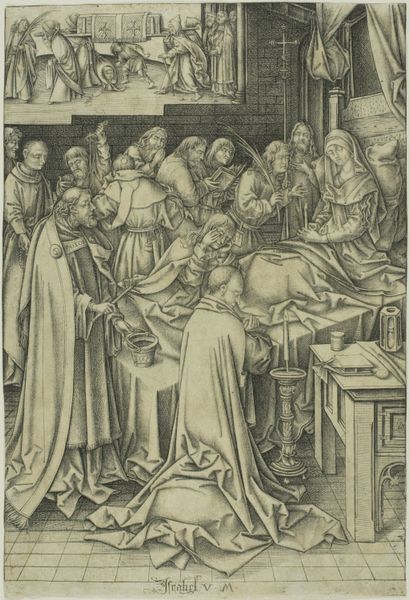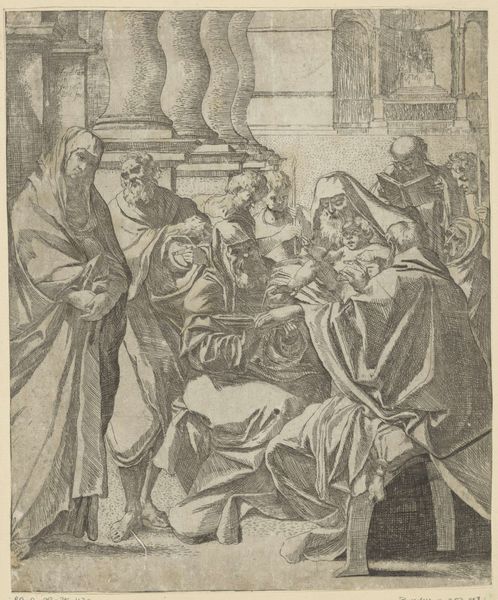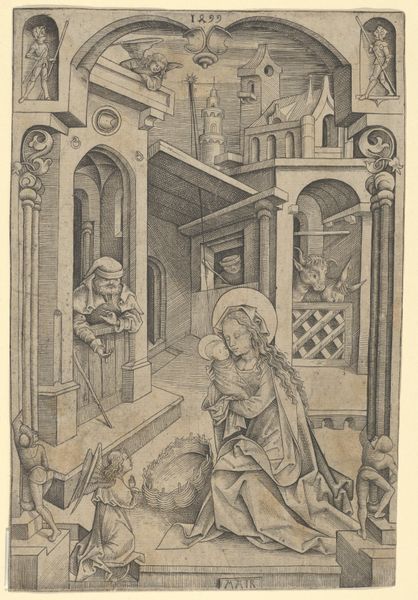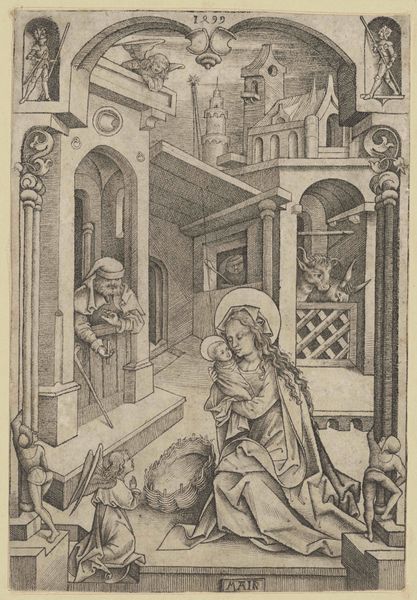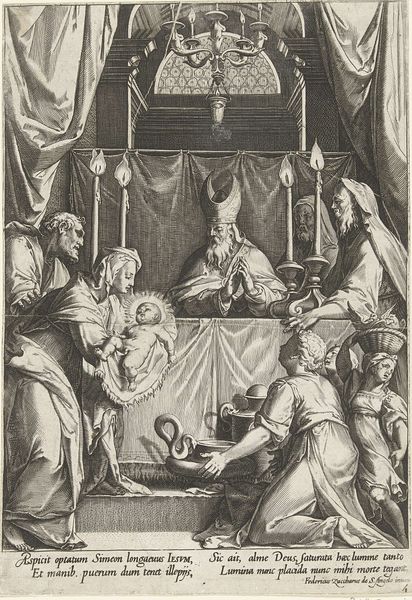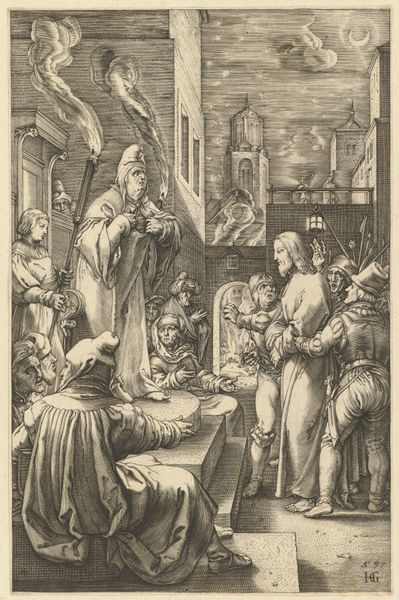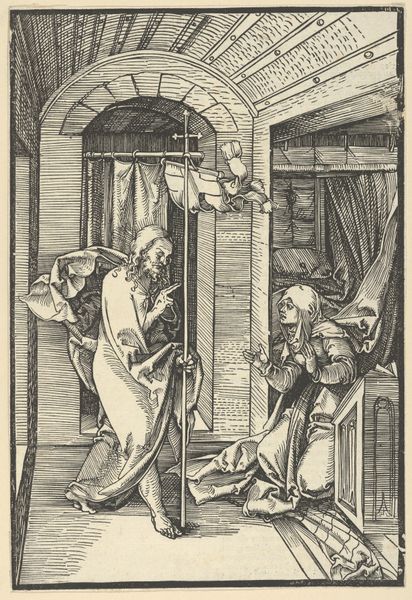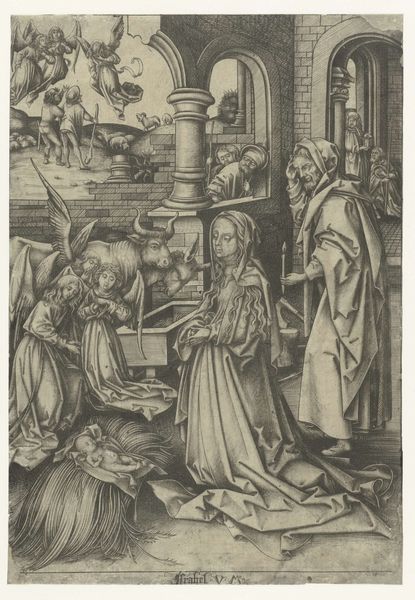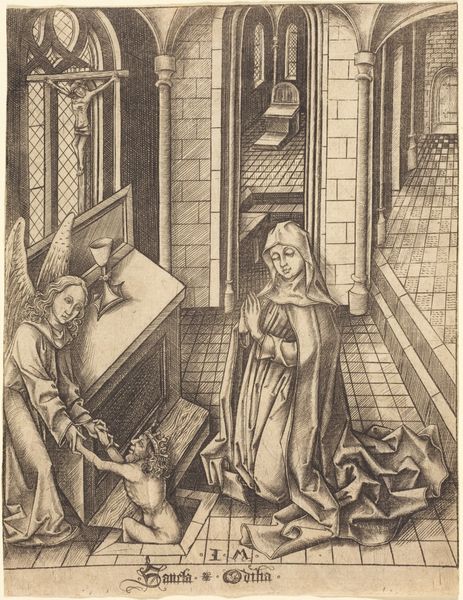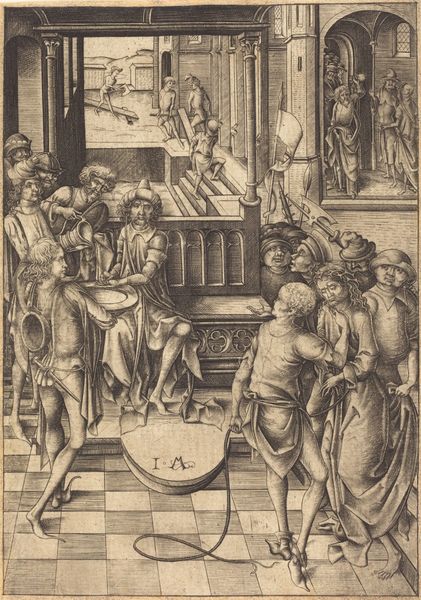
oil-paint
#
allegory
#
oil-paint
#
oil painting
#
vanitas
#
genre-painting
#
history-painting
#
northern-renaissance
#
early-renaissance
Dimensions: overall: 93 x 31 cm (36 5/8 x 12 3/16 in.) framed: 105.9 x 43.5 x 5.4 cm (41 11/16 x 17 1/8 x 2 1/8 in.)
Copyright: National Gallery of Art: CC0 1.0
Curator: Here we have Hieronymus Bosch’s chilling work, "Death and the Miser," estimated to have been painted between 1485 and 1490. It’s oil on wood, a medium allowing for those incredibly precise details. Editor: My immediate reaction is that it feels deeply unsettling. The composition is so vertical, stacked with figures, making it feel claustrophobic and ominous, a feeling reinforced by the sickly palette. Curator: Precisely! Bosch excels at imbuing his works with allegorical weight. Observe the figure of Death entering the room, while a miser, reaching into his chest, is seemingly oblivious. This is about earthly wealth versus spiritual salvation. Editor: And the chest itself! The meticulous rendering of its contents is interesting, isn’t it? We see coins, a skull—memento mori, naturally—but it also suggests a fixation with tangible goods, made more pronounced through the use of oil paints layered to suggest texture. Did this signify wealth in and of itself, a way of conveying status? Curator: Certainly. The opulence of material objects contrasts with the stark presence of death, serving as a potent symbol of vanitas – the transience of earthly existence. The symbols point to a life misspent. See how demons in the upper loft pull the sick man below towards salvation? A strange figure rises from underneath the sheets, maybe to damnation. The choice between paths hangs in the balance. Editor: You know, when looking at Bosch, I always think about the labor involved, both his and that of those who extracted and processed the raw materials – the pigments, the wood panel itself. The creation is a collaborative effort of resources from the world around him. Curator: A poignant point, underscoring the contrast between the transience depicted in the artwork and the enduring nature of its materials, though those materials do present moral ideas in an era wracked by plague. Editor: It makes me appreciate the physicality of the work, too, to acknowledge those unseen hands that contributed to its making. This collision is something, though. Curator: Absolutely. Hopefully, appreciating this work prompts contemplation on how we ourselves are accumulating experiences, creating something beautiful for ourselves, our own symbols. Editor: I suppose, in its way, the painting acts as both a material object and as an admonition – a reminder that our efforts, our labor, should be aimed towards something more enduring than just amassing earthly goods.
Comments
No comments
Be the first to comment and join the conversation on the ultimate creative platform.
